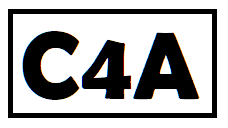Pentagon Calculator: Calculate All Elements
Understanding the Pentagon Calculator
The Pentagon Calculator is a powerful tool designed to help you quickly determine all measurements of a regular pentagon by entering any one known value. Whether you’re a student, professional, or just curious about geometry, this calculator simplifies the process.
Key Features
This Pentagon Calculator allows you to input one of the following measurements of a regular pentagon and computes all other measurements:
- Side Length (s): The length of one side of the pentagon.
- Area (A): The space inside the pentagon.
- Perimeter (P): The total length of the pentagon’s boundaries.
- Long Diagonal (d): The distance between two non-adjacent vertices.
- Short Diagonal (s): The distance between two vertices separated by one vertex.
- Circumcircle Radius (R): The radius of the circumscribed circle.
- Apothem (r): The distance from the center to the midpoint of one side.
Once you enter the appropriate value, the calculator will automatically compute all other measurements.
How to Use the Pentagon Calculator
To use the Pentagon Calculator, follow these simple steps:
- Select the known measurement type from the dropdown menu.
- Enter the value of the known measurement.
- Click the “Calculate” button.
- The calculator will display all other measurements of the pentagon.
Benefits of Using the Pentagon Calculator
There are several benefits to using our Pentagon Calculator:
- Accuracy: Get precise calculations every time.
- Convenience: Save time and effort with quick calculations.
- Education: Understand the relationships between different pentagon measurements.
Formulas Used in the Pentagon Calculator
The Pentagon Calculator uses the following formulas:
Area (A)
Formula:
Perimeter (P)
Formula:
Long Diagonal (d)
Formula:
Short Diagonal (s)
Formula:
Circumcircle Radius (R)
Formula:
Apothem (r)
Formula:
Interior Angle
Formula:
Exterior Angle
Formula:
Complex Explanation and Examples
Let’s delve deeper into each formula and provide some examples to illustrate how they work.
Area (A)
Example: Given side length \( s = 5 \).
Area:
Perimeter (P)
Example: Given side length \( s = 5 \).
Perimeter:
Long Diagonal (d)
Example: Given side length \( s = 5 \).
Long Diagonal:
Short Diagonal (s)
Example: Given side length \( s = 5 \).
Short Diagonal:
Circumcircle Radius (R)
Example: Given side length \( s = 5 \).
Circumcircle Radius:
Apothem (r)
Example: Given side length \( s = 5 \).
Apothem:
Interior Angle
Example: Interior angle of a regular pentagon.
Interior Angle:
Exterior Angle
Example: Exterior angle of a regular pentagon.
Exterior Angle:
Applications of Pentagon Calculations
Pentagon calculations have numerous applications in various fields, including:
- Engineering: Designing structures and components.
- Architecture: Planning buildings and spaces.
- Mathematics: Solving geometric problems and proofs.
- Art: Creating symmetrical designs.

In engineering, pentagons are used in the design of gears and other mechanical parts due to their unique properties. In architecture, pentagonal designs can be found in various building facades and interior layouts, providing both aesthetic appeal and structural integrity. Mathematicians study pentagons to explore geometric principles and their applications in higher mathematics. Artists use pentagonal shapes to create intricate patterns and designs that exhibit symmetry and balance.
Conclusion
The Pentagon Calculator is an essential tool for anyone working with pentagons. Whether you need to solve homework problems or perform professional calculations, this tool provides accurate and efficient results. Try it out today and see how it can simplify your work!
Follow us on Facebook for more updates!
Contact us at office@calculator4all.com
